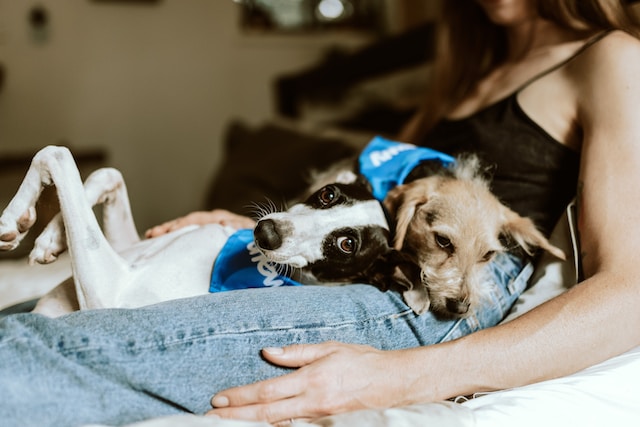In the world of canine communication, a remarkable trend has emerged – training dogs to communicate through buttons. This innovative method, pioneered by speech-language pathologist Christina Hunger, has captured the imagination of dog owners worldwide. In this article, we delve into the practical aspects of training your dog to communicate through buttons, offering tips and tricks to help you embark on this exciting journey of interspecies communication.
- Start with Simple Concepts: When introducing button-pressing communication to your dog, it’s essential to begin with basic concepts and requests. Select a few buttons that correspond to simple actions like “outside,” “play,” or “treat.” Consistency is key during this initial phase. Use the chosen button consistently when performing the associated action, and encourage your dog to press it before granting their request. Reinforce their behavior with praise and rewards to reinforce the association.
- Expand Vocabulary Gradually: Once your dog has grasped the basics, gradually introduce new buttons and expand their vocabulary. Choose words or phrases that align with your dog’s needs and routines. For instance, if they often signal the need for water, introduce a “water” button. Use consistent repetition and positive reinforcement to help them understand the meaning behind each button. Patience and consistency are crucial as your dog’s vocabulary grows over time.
- Create a Clear Button Layout: Maintaining a clear and organized button layout is vital for effective communication. Arrange the buttons in a way that makes sense to your dog and minimizes confusion. You can use visual aids, such as printed words or symbols on the buttons, to provide additional cues. Regularly review and rearrange the buttons as your dog’s vocabulary expands, ensuring they can easily locate and press the desired buttons.
- Encourage Independent Button Pressing: As your dog becomes more proficient with button-pressing, encourage independent communication. Instead of anticipating their needs, wait for your dog to initiate button-pressing to convey their desires. This empowers them and reinforces their agency in the communication process. Be responsive to their requests, rewarding their efforts with positive reinforcement and providing appropriate feedback.
- Maintain Consistency and Reinforcement: Consistency is key when training your dog to communicate through buttons. Ensure that everyone in your household adheres to the same training methods and uses consistent verbal cues or prompts for each button. Reinforce correct button-pressing behavior with praise, treats, or other rewards that your dog finds motivating. Consistent reinforcement strengthens the associations between buttons and their corresponding actions or requests.
- Seek Professional Guidance: If you encounter challenges or wish to explore advanced training techniques, consider seeking professional guidance. Dog trainers, behaviorists, or speech-language pathologists with expertise in animal communication can provide valuable insights, personalized advice, and address any specific training issues you may encounter. Their expertise will help you navigate the intricacies of training your dog to communicate through buttons effectively.
Ethical Considerations: When training your dog to communicate through buttons, it is essential to prioritize their well-being and maintain ethical practices. Ensure that your dog’s physical and mental health needs are met, and avoid placing undue stress or pressure on them during the training process. Regular breaks, mental stimulation, and a positive training environment contribute to a positive training experience for both you and your dog.
Conclusion: Training your dog to communicate through buttons opens a new realm of understanding and connection with your furry companion. By following these tips and tricks, you can embark on an exciting journey of communication and strengthen the bond between you and your dog. Remember to approach the training process with patience, consistency, and respect for your dog’s individual learning pace. As you navigate this innovative method, you’ll witness the transformative power.




